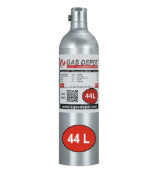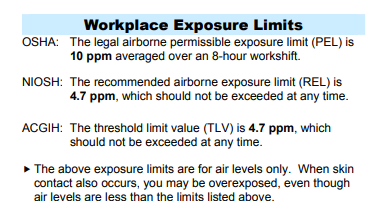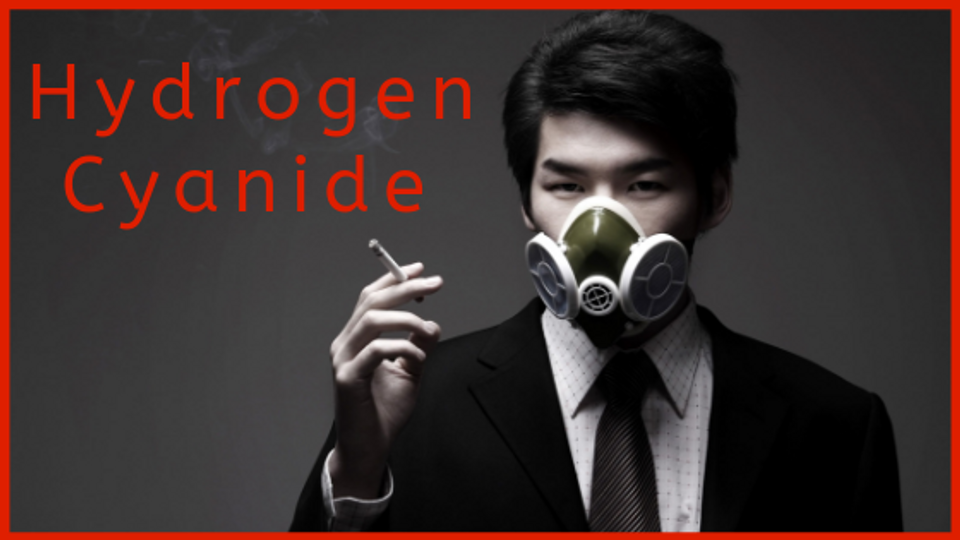Hydrogen Cyanide (HCN)
Hydrogen Cyanide is a volatile reactive gas, smells like bitter almonds, is generally absorbed by inhalation, and sometimes through the skin. It is potentially lethal depending on the concentration and duration of exposure. The bitter almond odor may not be sensed by some and a direct reading instrument is necessitated. If a potentially immediate dangerous to life and health (IDLH) atmosphere exists, the testing must occur with full air supplied protection and clothing. The gas detector must be accurate and trustworthy. Bumping (on-site calibration) with an Egas Depot calibration gas will assure that the detector is capable of specifically sensing hydrogen cyanide gas.

About Hydrogen Cyanide
In very minute concentrations, Hydrogen Cyanide (HCN) is a naturally occurring gas that we are all exposed to on a daily basis in the clothes we wear, in our car interiors, in the couches we sit on and even in the foods we eat. However, when we come into contact with these everyday items containing HCN there is very little threat because the human body can detoxify seemingly very toxic substances when concentrations are below threshold amounts. . Hydrogen Cyanide is a colorless to pale blue liquid or gas that has an odor similar to "bitter almonds". The real danger comes when we have been exposed to high concentrations such as in burning buildings where burning synthetic fabrics can release HCN and more specifically in areas that are not well ventilated. Many industries such as plastics and dyes, pesticides, paper and textiles pose the risk of Hydrogen Cyanide Poisoning due to its use in the manufacturing process of these products. Firefighters have high exposure risk due to the combustion of man made products during building or house fires and the fact that HCN has been found to be thirty five times more toxic than CO[1].Knowing the occupational exposure limits and signs and symptoms of HCN exposure to watch out for, are key to ensuring your health and safety while in the workplace.
Occupational Exposure Limits of Hydrogen Cyanide (HCN)

Photo retrieved from: Hazardous Substance Fact Sheet (2011) https://nj.gov/health/eoh/rtkweb/documents/fs/101...
Hydrogen Cyanide Gas Detectors: Bump Test
Direct-reading portable gas monitors (DRPGMs) were created to warn workers that an oxygen deficient atmosphere may pose a risk or that toxic gases such as Hydrogen Cyanide may be present. The most accurate way to ensure that your gas meters are working properly is to evaluate it with a recognized concentration of gas. One way to do this is by using a specific calibration gas such as Egas depot HCN calibration gas to conduct a "Bump Test" before going into the field to ensure that the sensors in your gas meter are reliable and accurate.
Industrial Uses for Hydrogen Cyanide
Hydrogen Cyanide has a number of industrial and commercial uses. You can find HCN being used for fumigation and mining purposes as well as in the production of pesticides, plastics, synthetic fibers and dyes. Despite is dangerous health effects Hydrogen Cyanide is a very important chemical with over one million tons produced on an annual basis[2].
Health Effects of Hydrogen Cyanide Poisoning
The threat of HCN poisoning occurs when you have been exposed to a high concentration in a short amount of time. Hydrogen Cyanide (HCN) has an odor similar to bitter almonds, but you should not rely on your sense of smell alone to detect the presence of this poisonous gas as roughly 40% of the population lack the genetic ability to smell HCN[1].Hydrogen Cyanide is what you call a systemic chemical asphyxiant, which means that it has the ability to disrupt the use of Oxygen in every organ of your body. The minimum oral fatal dose of HCN is 50 mg for adults. Roughly, an airborne concentration of 90 ppm is fatal within thirty minutes and 300 ppm is fatal within only a few minutes [2].Exposure to this gas can be fatal within minutes as your brain, heart and lungs are all at risk of hypoxia. The routes of exposure include inhalation, ingestion, skin and eye contact. Some of the many symptoms that can occur include:
- Headache
- Confusion
- Weakness
- Changes in taste (from long term exposure)
- Abdominal Pain (Ingestion)
- Heart palpitations
- Difficulty Breathing
- Nausea and Vomiting
- Seizures
- Cardiac Arrest
- Respiratory Arrest
- Death
Hydrogen Cyanide Calibration Gas Cylinders
Egas Depot offers a wide range of Hydrogen Cyanide Calibration Gas cylinders. We are a one-stop shop for all of your field calibration needs
References
1. Hydrogen Cyanide: New Concerns for Firefighting and Medical Tactics (6.29.2009)retrieved from https://www.fireengineering.com/articles/2009/06/h...
2. Hydrogen Cyanide: The Real Killer Among Fire Gases (12.31.2006)retrieved from https://www.firehouse.com/rescue/article/10502165/...

